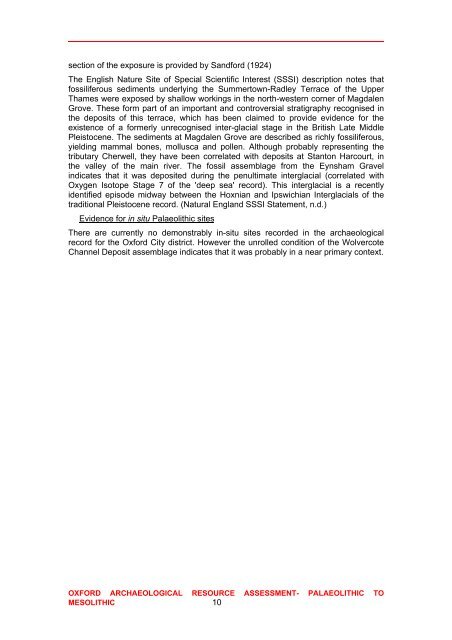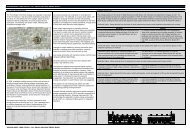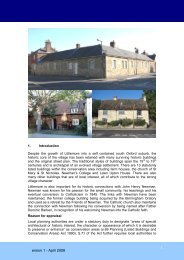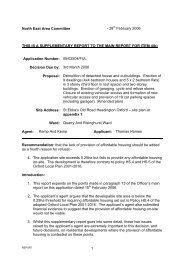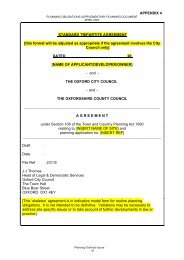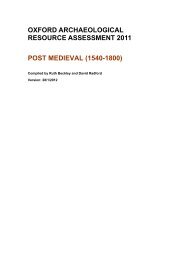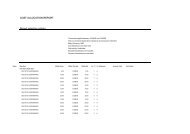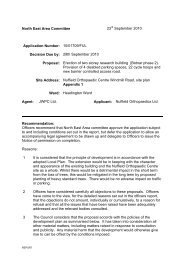Palaeolithic to Mesolithic Oxford (500000 - 4000 BC) - Oxford City ...
Palaeolithic to Mesolithic Oxford (500000 - 4000 BC) - Oxford City ...
Palaeolithic to Mesolithic Oxford (500000 - 4000 BC) - Oxford City ...
Create successful ePaper yourself
Turn your PDF publications into a flip-book with our unique Google optimized e-Paper software.
section of the exposure is provided by Sandford (1924)<br />
The English Nature Site of Special Scientific Interest (SSSI) description notes that<br />
fossiliferous sediments underlying the Summer<strong>to</strong>wn-Radley Terrace of the Upper<br />
Thames were exposed by shallow workings in the north-western corner of Magdalen<br />
Grove. These form part of an important and controversial stratigraphy recognised in<br />
the deposits of this terrace, which has been claimed <strong>to</strong> provide evidence for the<br />
existence of a formerly unrecognised inter-glacial stage in the British Late Middle<br />
Pleis<strong>to</strong>cene. The sediments at Magdalen Grove are described as richly fossiliferous,<br />
yielding mammal bones, mollusca and pollen. Although probably representing the<br />
tributary Cherwell, they have been correlated with deposits at Stan<strong>to</strong>n Harcourt, in<br />
the valley of the main river. The fossil assemblage from the Eynsham Gravel<br />
indicates that it was deposited during the penultimate interglacial (correlated with<br />
Oxygen Iso<strong>to</strong>pe Stage 7 of the 'deep sea' record). This interglacial is a recently<br />
identified episode midway between the Hoxnian and Ipswichian Interglacials of the<br />
traditional Pleis<strong>to</strong>cene record. (Natural England SSSI Statement, n.d.)<br />
Evidence for in situ <strong>Palaeolithic</strong> sites<br />
There are currently no demonstrably in-situ sites recorded in the archaeological<br />
record for the <strong>Oxford</strong> <strong>City</strong> district. However the unrolled condition of the Wolvercote<br />
Channel Deposit assemblage indicates that it was probably in a near primary context.<br />
OXFORD ARCHAEOLOGICAL RESOURCE ASSESSMENT- PALAEOLITHIC TO<br />
MESOLITHIC 10


